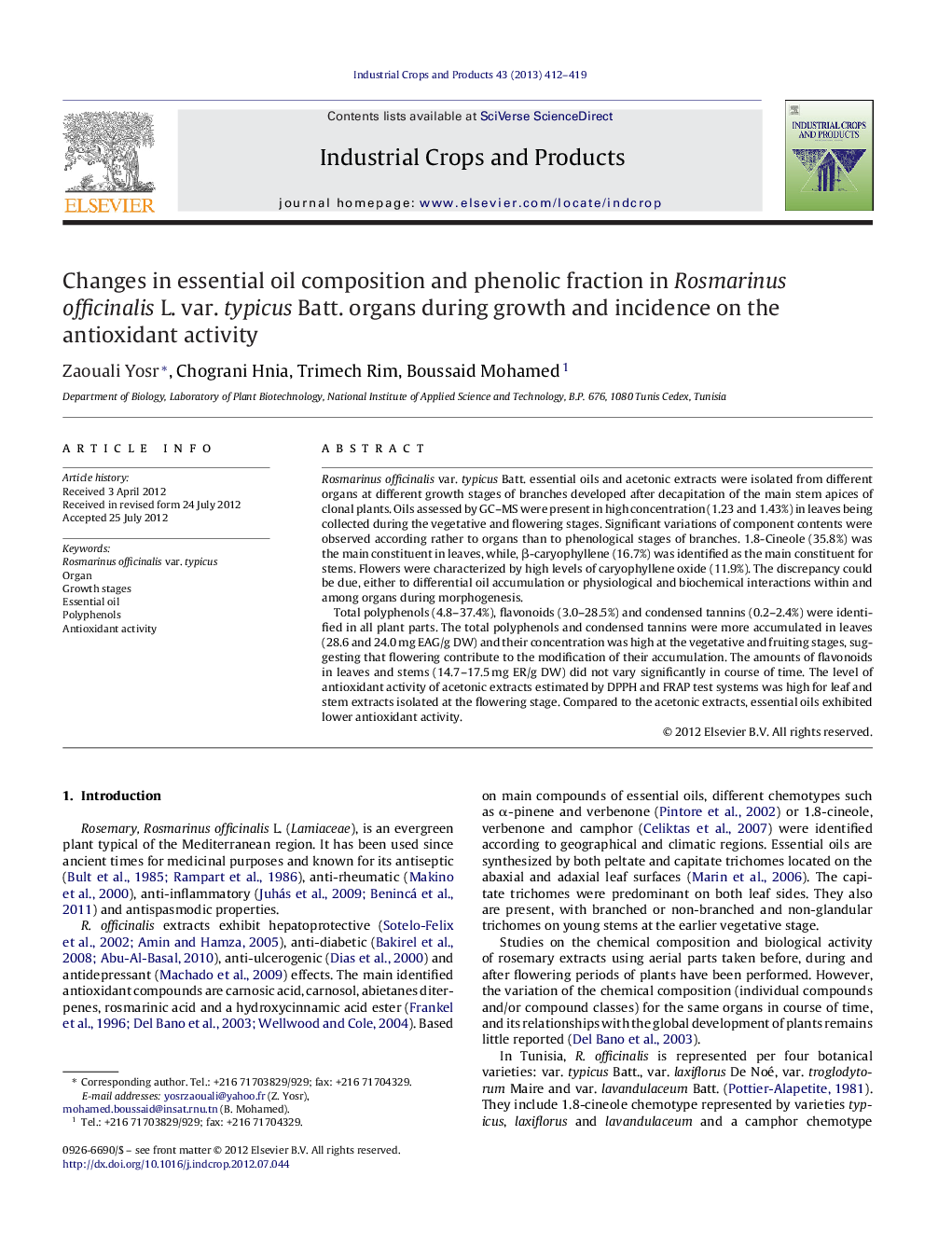| کد مقاله | کد نشریه | سال انتشار | مقاله انگلیسی | نسخه تمام متن |
|---|---|---|---|---|
| 4514149 | 1624866 | 2013 | 8 صفحه PDF | دانلود رایگان |

Rosmarinus officinalis var. typicus Batt. essential oils and acetonic extracts were isolated from different organs at different growth stages of branches developed after decapitation of the main stem apices of clonal plants. Oils assessed by GC–MS were present in high concentration (1.23 and 1.43%) in leaves being collected during the vegetative and flowering stages. Significant variations of component contents were observed according rather to organs than to phenological stages of branches. 1.8-Cineole (35.8%) was the main constituent in leaves, while, β-caryophyllene (16.7%) was identified as the main constituent for stems. Flowers were characterized by high levels of caryophyllene oxide (11.9%). The discrepancy could be due, either to differential oil accumulation or physiological and biochemical interactions within and among organs during morphogenesis.Total polyphenols (4.8–37.4%), flavonoids (3.0–28.5%) and condensed tannins (0.2–2.4%) were identified in all plant parts. The total polyphenols and condensed tannins were more accumulated in leaves (28.6 and 24.0 mg EAG/g DW) and their concentration was high at the vegetative and fruiting stages, suggesting that flowering contribute to the modification of their accumulation. The amounts of flavonoids in leaves and stems (14.7–17.5 mg ER/g DW) did not vary significantly in course of time. The level of antioxidant activity of acetonic extracts estimated by DPPH and FRAP test systems was high for leaf and stem extracts isolated at the flowering stage. Compared to the acetonic extracts, essential oils exhibited lower antioxidant activity.
► Oils assessed by GC–MS were present in high concentration in leaves being collected during the vegetative (1.23%) and flowering stages (1.43%).
► 1.8-Cineole (35.8%), β-caryophyllene (16.7%) and caryophyllene oxide (11.9%) were the principal constituents in leaves, stems and flowers, respectively.
► The total polyphenols and tannins were more accumulated in leaves (28.6 and 24.0 mg EAG/g DW) and their concentration was high at the vegetative and fruiting stages.
► The activity of extracts isolated from leaves and stems at the flowering stage was higher than that of those isolated at the vegetative or fruiting stages.
► Compared to the methanol extracts, essential oils exhibited lower antioxidant activity.
Journal: Industrial Crops and Products - Volume 43, May 2013, Pages 412–419